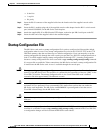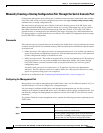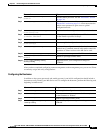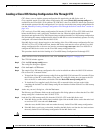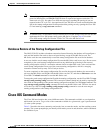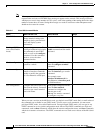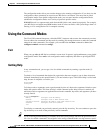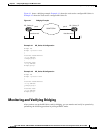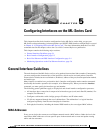
CHAPTER
4-1
Cisco ONS 15310-CL, ONS 15310-MA, and ONS 15310-MA SDH Ethernet Card Software Feature and Configuration Guide, R9.1 and R9.2
78-19415-01
4
Configuring Bridging on the ML-Series Card
This chapter describes how to configure bridging for the ML-Series card. Bridging is one of the simplest
configurations of the ML-Series card. Other alternatives exist to simple bridging, such as Integrated
Routing and Bridging (IRB). The user should consult the chapter detailing their desired type of
configuration.
This chapter includes the following major sections:
•
Understanding Bridging, page 4-1
•
Configuring Bridging, page 4-2
•
Monitoring and Verifying Bridging, page 4-3
Caution
Cisco Inter-Switch Link (ISL) and Cisco Dynamic Trunking Protocol (DTP) are not supported by the
ML-Series cards, but the ML-Series broadcast forwards these formats. Using ISL or DTP on connecting
devices is not recommended. Some Cisco devices attempt to use ISL or DTP by default.
Understanding Bridging
The ML-Series card supports transparent bridging for Fast Ethernet, Fast EtherChannel (FEC),
packet-over-SONET/SDH (POS) ports, and POS channel. It supports a maximum of 255 active bridge
groups. Transparent bridging combines the speed and protocol transparency of a spanning-tree bridge,
along with the functionality, reliability, and security of a router.
To configure bridging, you must perform the following tasks in the modes indicated:
•
In global configuration mode:
–
Enable bridging of IP packets.
–
(Optional) Select the type of Spanning Tree Protocol (STP).
•
In interface configuration mode:
–
Determine which interfaces belong to the same bridge group.
The ML-Series card bridges all nonrouted traffic among the network interfaces comprising the
bridge group. If spanning tree is enabled, the interfaces become part of the same spanning tree.
Interfaces that do not participate in a bridge group cannot forward bridged traffic.



